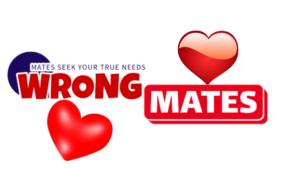
Source: Art: DALL-E/OpenAI
In every field, we’re inundated with data. Medicine, education, and business all face an accelerating flow of information—research findings, changing best practices, and shifting demands—more than any individual can process.
Historically, this abundance has been seen as a problem to manage, leading to concerns about “data overload.” But artificial intelligence introduces a transformative ontological shift: It changes how information is structured, moving from static maps to dynamic, interactive webs of knowledge that adapt and evolve with each use. This shift marks a new era where knowledge is not a static collection but an active, evolving partner in thought.
The Ontology of Static Maps vs. Dynamic Webs
Traditionally, knowledge systems have been built on the “brick and mortar” of static frameworks. Libraries, databases, and digital archives organize information hierarchically, setting each piece of data within a fixed system of categories and relationships. In this model, we retrieve facts and interpret them individually, creating understanding by piecing together static components. This approach worked when knowledge expanded at a slower pace, but it becomes problematic as data proliferates and changes rapidly. The model itself struggles to keep up, as each new piece of information risks adding to the chaos.
AI, particularly in the form of large language models (LLMs), offers an entirely new construct. LLMs create knowledge dynamically, drawing connections based on context rather than fixed categories. These models don’t merely store and retrieve; they interpret and synthesize, reshaping the structure of information with each interaction.
This fluid, adaptive framework is perhaps best described as a “dynamic web”—a living network of ideas that transforms based on new inputs. In this way, AI transcends static storage, embodying an ontology that mirrors the adaptable, interconnected nature of human cognition itself.
From Information Overload to Collaborative Intelligence
By turning data into a dynamic web, AI helps us shift from passive information retrieval to active collaboration with information and knowledge. Information overload, once an insurmountable burden, becomes fuel for insight. Instead of expecting individuals to absorb and memorize every fact, we can use AI to navigate, contextualize, and integrate information in real-time.
AI doesn’t just deliver data; it interprets patterns, draws connections, and prompts new lines of inquiry—transforming the way we engage with knowledge. And this embodies both an intellectual and sociatial shift that I refer to as the Cognitive Age.
Consider the implications in medicine. Physicians may no longer need to memorize every new development in treatment protocols. AI can interpret vast volumes of medical research, identify relevant insights, and contextualize findings, enabling doctors to focus on patient care while remaining fully informed. Here, the AI becomes a cognitive partner, amplifying human expertise through dynamic engagement rather than static retrieval.
In education, this dynamic knowledge structure offers a path beyond rote memorization. Students, rather than being tasked with internalizing endless facts, can learn to navigate and question ideas in collaboration with AI. This partnership encourages adaptive thinking, where knowledge is created through exploration and interaction rather than passive absorption.
In a similar fashion, the very nature of the written word is undergoing a transition from the static and limited presentation of clumped symbols to a much richer dynamic in which these words “live” in a broader and more dynamic context, unlocking and integrating them into a vast perspective of interconnected wisdom.
An Ontological Inflection Point
This ontological shift—from static maps to dynamic webs—is more than a technical advancement. It’s a fundamental change in how we understand knowledge and its role in human potential. Knowledge is no longer a static asset to be stored and retrieved but a dynamic force that evolves through interaction. By moving to a web-like structure of information, AI enables a collaborative approach to knowledge, where understanding is continuously refined and expanded.
This shift redefines what it means to be knowledgeable. Expertise is no longer exclusively about memorizing vast quantities of information; it’s about navigating, synthesizing, and creating insights within a fluid knowledge framework. AI becomes not just a tool but a true partner, offering a model of cognitive collaboration where humans and machines co-create knowledge, fostering a dynamic environment of perpetual learning and discovery.
The Extraordinary Potential of Human-AI Synergy
As we adapt to this new ontology of knowledge, we’re moving into an era where AI isn’t simply an accessory to human intelligence but an extension of it. Information overload is no longer an obstacle; it’s a catalyst. In the partnership between human insight and AI’s adaptive structure, we unlock a new level of understanding and creativity, transforming data from a burden into an endless resource that fuels innovation.
This ontological inflection point marks a transformation in our cognitive landscape. AI’s dynamic web turns data overload into a tool for progress, making information not a flood that overwhelms but a resource that empowers. In embracing this shift, we redefine knowledge itself—not as a fixed map but as a collaborative journey, a dynamic web that grows alongside us as we explore the vast potential of human intelligence in partnership with AI.

